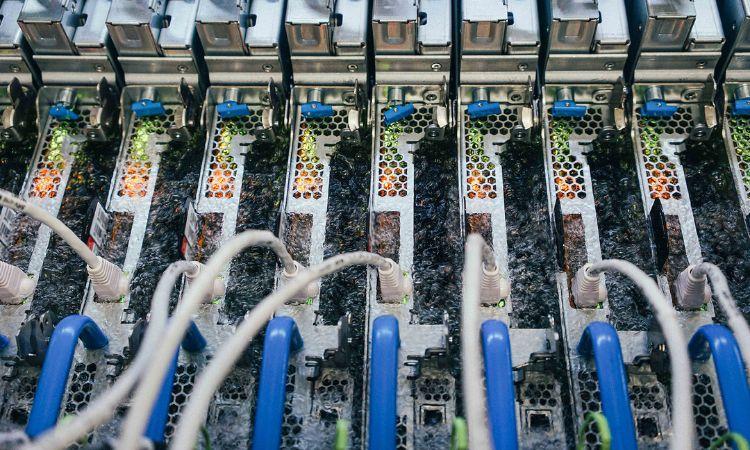The global immersion cooling market size reached a value of more than USD 196.5 million in 2023. The market is estimated to grow at a CAGR of 22.61% in the forecast period of 2024-2032 to reach above USD 667.40 million by 2032. As data centers continue to play a pivotal role in the digital age, the need for efficient and sustainable cooling solutions has never been greater. In this context, immersion cooling has emerged as a transformative technology, offering numerous advantages that not only enhance the performance of data centers but also contribute to their sustainability.
In this blog post, we will take a deep dive into the world of immersion cooling, exploring its many benefits and the impact it has on the data center industry. We will examine how this innovative cooling method is not only reducing operational costs but also paving the way for a greener and more scalable future for data centers.
Energy Efficiency: Cooling Cost Reduction and Beyond
One of the primary advantages of immersion cooling is its significant impact on energy efficiency within data centers. This section will delve into the following aspects:
Reduction in Cooling Costs:
Traditional air-cooling methods require substantial amounts of energy to maintain optimal temperatures within data centers. Immersion cooling, on the other hand, submerges server components in a dielectric fluid, which is more efficient at dissipating heat. This reduces the workload on traditional air conditioning systems, resulting in a substantial reduction in cooling costs.
PUE (Power Usage Effectiveness) Improvement:
PUE is a critical metric in assessing a data center’s efficiency. Immersion cooling can lead to a dramatic improvement in PUE, as the cooling system’s power consumption decreases. A lower PUE score indicates a more efficient data center operation, ultimately translating into cost savings and reduced environmental impact.
Impact on Carbon Footprint:
Reducing energy consumption in data centers not only saves money but also aligns with global sustainability goals. Immersion cooling’s energy efficiency contributes to a reduced carbon footprint, making it an attractive option for organizations committed to environmentally responsible practices.
Case Study: Energy Savings Achieved with Immersion Cooling:
To illustrate the real-world impact of immersion cooling on energy savings, we will examine a case study of a data center that adopted this technology. We’ll provide concrete numbers and statistics to showcase the tangible benefits.
Enhanced Performance: A Cooler, More Reliable Data Center
In this section, we will explore how immersion cooling enhances the performance and reliability of data centers:
Maintenance of Consistent Temperatures:
Traditional cooling methods may struggle to maintain consistent temperatures throughout a data center, leading to hot spots that can affect server performance. Immersion cooling ensures uniform cooling across all components, eliminating the risk of hot spots and promoting stable operation.
Reduced Risk of Hot Spots:
Hot spots can lead to hardware failures, reduced server lifespan, and increased downtime. Immersion cooling mitigates this risk, resulting in a more reliable data center environment.
Impact on Server Performance and Lifespan:
By keeping servers at optimal temperatures, immersion cooling extends the lifespan of critical hardware components, reducing the frequency of replacements and maintenance. This not only saves on capital expenditure but also minimizes operational disruptions.
Real-world Examples of Performance Gains:
We will share real-world examples and testimonials from data centers that have experienced improved server performance and reliability after adopting immersion cooling.
Space Savings: Maximizing Data Center Real Estate
Immersion cooling doesn’t just save on energy and improve performance; it also offers valuable space-saving advantages:
Compact Cooling Infrastructure:
Traditional cooling systems require large HVAC units and extensive ductwork, taking up valuable floor space. Immersion cooling systems are inherently more compact, allowing data centers to make better use of their real estate.
Increased Server Density:
With smaller cooling infrastructure and reduced heat dissipation concerns, data centers can increase server density, accommodating more hardware in the same physical footprint. This scalability is crucial for businesses experiencing rapid growth in data processing demands.
Maximizing Data Center Space:
We’ll provide illustrations or diagrams to visually demonstrate how immersion cooling systems optimize data center layouts and allow for more efficient use of available space.
Environmental Benefits: Going Green with Immersion Cooling
Immersion cooling aligns with sustainability initiatives and offers various environmental benefits:
Reduction in Water Usage:
Traditional cooling methods often rely on vast amounts of water for cooling purposes. Immersion cooling eliminates the need for water cooling, reducing water consumption and minimizing the strain on local water resources.
Lower Noise Pollution:
Traditional data center cooling systems can generate significant noise pollution. Immersion cooling is quieter, creating a more pleasant working environment for data center staff and reducing noise pollution in surrounding areas.
Decreased Use of Refrigerants:
Refrigerants used in traditional cooling systems can be harmful to the environment. Immersion cooling systems use dielectric fluids that are less harmful, contributing to a reduction in greenhouse gas emissions.
Green Initiatives and Sustainability Goals:
We will discuss how adopting immersion cooling can help organizations meet their sustainability goals and align with environmental regulations and standards.
Scalability and Future-Proofing: Adapting to Changing Needs
Immersion cooling offers flexibility and scalability for data centers as they evolve to meet new challenges:
Adaptability to Growing Data Center Needs:
The ability to scale cooling solutions with ease is essential in today’s dynamic data center landscape. Immersion cooling systems are highly adaptable, making it simpler to expand as needed.
Compatibility with Emerging Technologies (e.g., AI, IoT):
Emerging technologies often require enhanced processing power and generate more heat. Immersion cooling ensures that data centers can accommodate these technologies without compromising performance or energy efficiency.
Cost Savings in Long-Term Planning:
We will discuss how immersion cooling can lead to significant cost savings in long-term data center planning by providing a scalable and future-proof cooling solution.
Challenges and Considerations: Addressing the Complexities
While immersion cooling offers numerous advantages, it’s essential to address potential challenges and considerations:
Initial Implementation Costs:
Immersion cooling systems may require significant upfront investment. We’ll explore strategies for budgeting and financing to ease the transition.
Fluid Management and Safety:
Handling dielectric fluids requires careful management and safety precautions. We’ll provide insights into best practices for fluid management and safety protocols.
Maintenance and Servicing:
Regular maintenance is essential to keep immersion cooling systems running efficiently. We’ll discuss maintenance best practices and potential service issues to be aware of.
Regulatory Compliance:
Data centers must adhere to various regulations and standards. We’ll outline the regulatory considerations associated with immersion cooling and how to ensure compliance.
Conclusion: Immersion Cooling’s Transformative Potential
In conclusion, immersion cooling is revolutionizing the data center industry by offering a multitude of advantages. From energy efficiency and enhanced performance to space savings and environmental benefits, this innovative technology is reshaping how data centers operate.
As the global immersion cooling market continues to grow, it’s clear that immersion cooling is not just a trend but a strategic investment for data centers looking to optimize their operations, reduce costs, and contribute to a greener future.`



